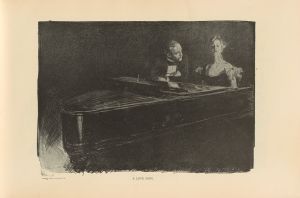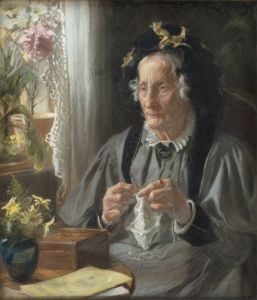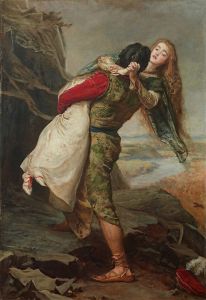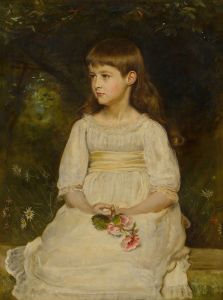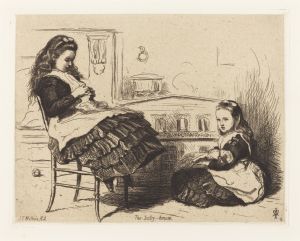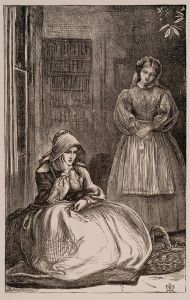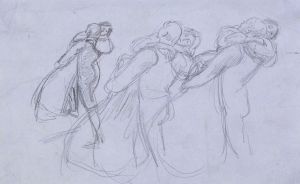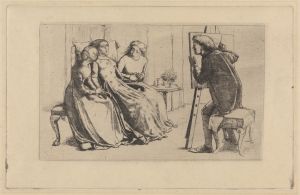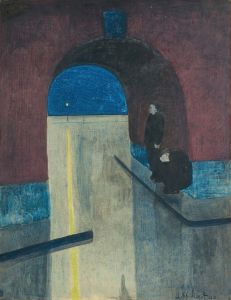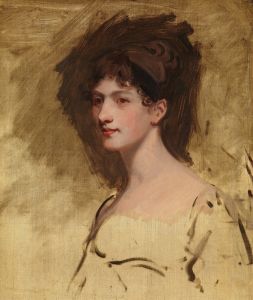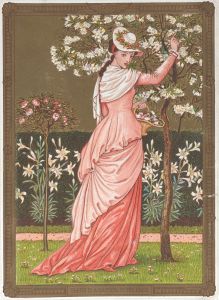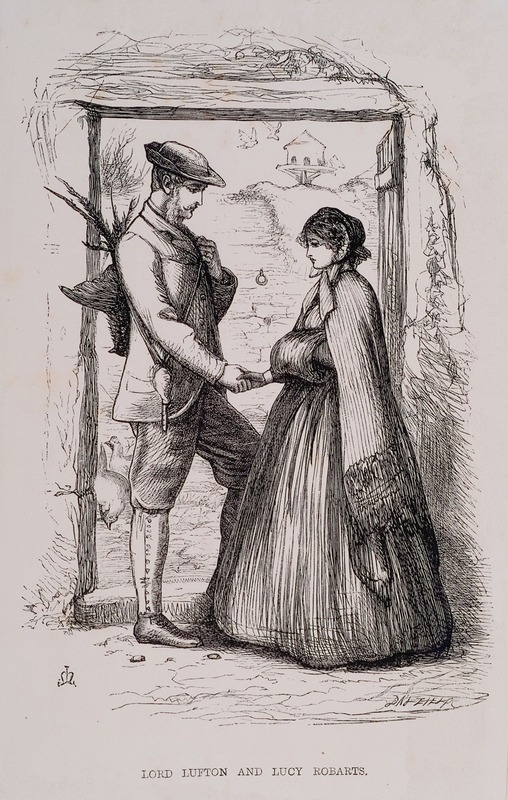
Lord Lufton and Lucy Robarts
A hand-painted replica of Sir John Everett Millais’s masterpiece Lord Lufton and Lucy Robarts, meticulously crafted by professional artists to capture the true essence of the original. Each piece is created with museum-quality canvas and rare mineral pigments, carefully painted by experienced artists with delicate brushstrokes and rich, layered colors to perfectly recreate the texture of the original artwork. Unlike machine-printed reproductions, this hand-painted version brings the painting to life, infused with the artist’s emotions and skill in every stroke. Whether for personal collection or home decoration, it instantly elevates the artistic atmosphere of any space.
"Lord Lufton and Lucy Robarts" is a painting by Sir John Everett Millais, a prominent English painter and one of the founding members of the Pre-Raphaelite Brotherhood. The painting was created in 1864 and is based on characters from Anthony Trollope's novel "Framley Parsonage," which was published in 1861. The novel is part of Trollope's Chronicles of Barsetshire series, which explores the lives and relationships of various characters in the fictional county of Barsetshire.
The painting depicts a poignant moment between the characters Lord Lufton and Lucy Robarts. In the novel, Lucy Robarts is the sister of the vicar of Framley, and Lord Lufton is a wealthy and influential nobleman. Their relationship is central to the plot, as it explores themes of social class, love, and duty. Millais captures the emotional intensity of their interaction with great skill, reflecting the Pre-Raphaelite emphasis on detailed realism and vibrant color.
Millais was known for his meticulous attention to detail and his ability to convey complex emotions through his work. In "Lord Lufton and Lucy Robarts," he uses these skills to bring Trollope's characters to life. The painting features rich textures and intricate details, from the characters' clothing to the natural surroundings, which are characteristic of Millais's style.
The Pre-Raphaelite Brotherhood, which Millais co-founded in 1848 along with Dante Gabriel Rossetti and William Holman Hunt, sought to return to the detail, intense colors, and complex compositions of Quattrocento Italian art. They rejected the academic standards of their time, which they felt had been corrupted by the influence of Sir Joshua Reynolds and the Royal Academy. Millais's work, including "Lord Lufton and Lucy Robarts," exemplifies these principles through its vivid portrayal of the characters and their environment.
"Lord Lufton and Lucy Robarts" is notable not only for its artistic qualities but also for its literary connection. Millais and Trollope were contemporaries, and their collaboration highlights the interplay between literature and visual art during the Victorian era. The painting serves as a visual interpretation of Trollope's narrative, offering viewers a deeper understanding of the characters and their story.
The painting is part of the collection at the Ashmolean Museum in Oxford, which houses a significant number of works by Millais and other Pre-Raphaelite artists. The Ashmolean Museum, founded in 1683, is one of the oldest public museums in the world and holds an extensive collection of art and antiquities.
In summary, "Lord Lufton and Lucy Robarts" by Sir John Everett Millais is a significant work of art that captures a key moment from Anthony Trollope's novel "Framley Parsonage." Through its detailed realism and emotional depth, the painting exemplifies the principles of the Pre-Raphaelite Brotherhood and highlights the close relationship between Victorian literature and visual art.






